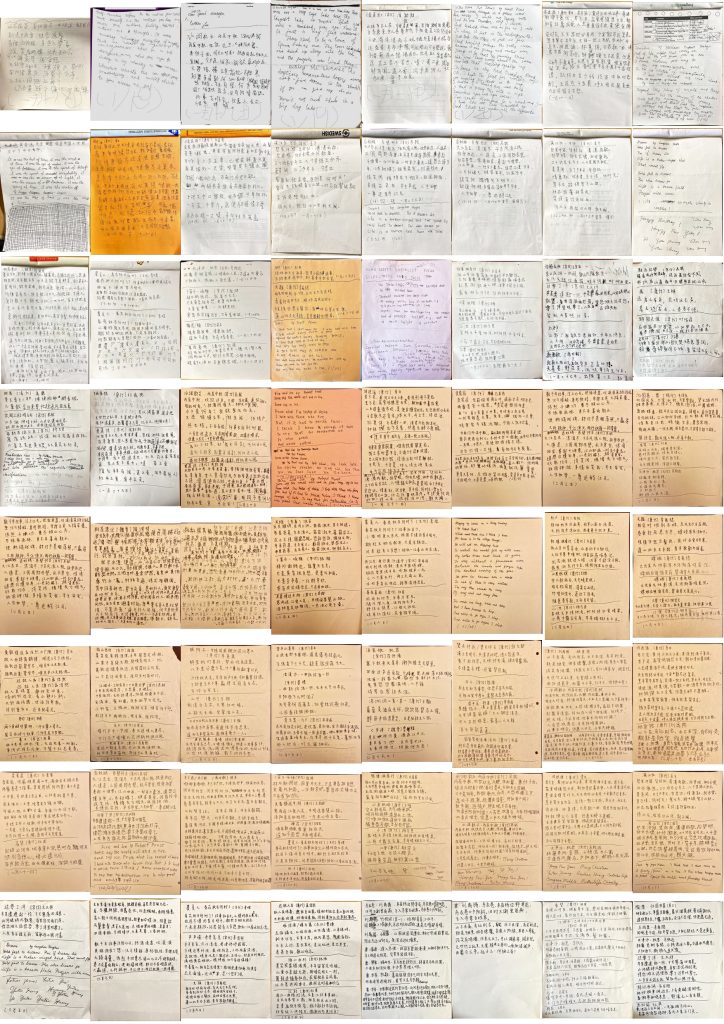As a right-handed person, performing fine motor tasks like writing with my right hand is undoubtedly a challenge for me.
After being admitted to the hospital and having nothing else to do, I tried practicing my first piece of writing on a scrap of paper. I wrote Liu Yuxi’s “Inscription of the Humble Room” from the Tang dynasty. It’s only less than a hundred characters, but it took me dozens of minutes to finish. I ended up with a sore wrist, blurry eyes, and the words on the paper so wildly scrawled that even I myself couldn’t read.

BTW, here is one of the translations for this poem.
A mountain needn’t be high.
It is famous so long as there is a deity on it.
A lake needn’t be deep.
It has supernatural power so long as there is a dragon in it.
My home is humble,
But it enjoys the fame of virtue so long as I am living in it.
The moss creeping onto the doorsteps turns them green.
The color of the grass reflected through the bamboo curtains turns the room blue.
Erudite scholars come in good spirits to talk with me,
And among my guests there is no unlearned common man.
In this humble home, I can enjoy playing my plainly decorated qin,
or read the Buddhist Scriptures quietly,
Without the disturbance of the noisy tunes that jar on the ears,
or the solemn burden of reading official documents.
My humble home is like the thatched hut of Zhuge Liang of Nanyang,
or the Pavilion Ziyun of Xishu.
Confucius once said:
“How could we call a room humble as long as there is a virtuous man in it?”
From then on, I set a goal to practice writing one or two pieces each day. The content I wrote came from a Chinese classical poetry app I had just installed on my phone — mostly well-known works I had memorized thoroughly back in school. As I wrote and recited them, I not only exercised the fine motor controls of my “bad hand” but also hoped it would help with my speech recovery.
For more than a month, I wrote every day. Works like “Inscription on the Humble Home,” ” On the Love of the Lotus,” “Water Melody,” “Peach Blossom Spring,” “Man Jiang Hong,” “Invitation to Wine,” “The Charcoal Seller,” each familiar masterpiece was carefully committed to paper, stroke by stroke. Gradually, the characters stopped twisting and flying across the page. They finally began to take recognizable shapes. The strokes became mostly straight and even, and sometimes even showed a bit of flair. Still, I couldn’t regain the fluid control I once had over the pen. The characters looked neater, but also somewhat unfamiliar. Moreover, whenever I switched pens or paper, or even slightly adjusted the position of my hand or body, the written characters would vary greatly.
Below are a few samples from different periods of my practice.
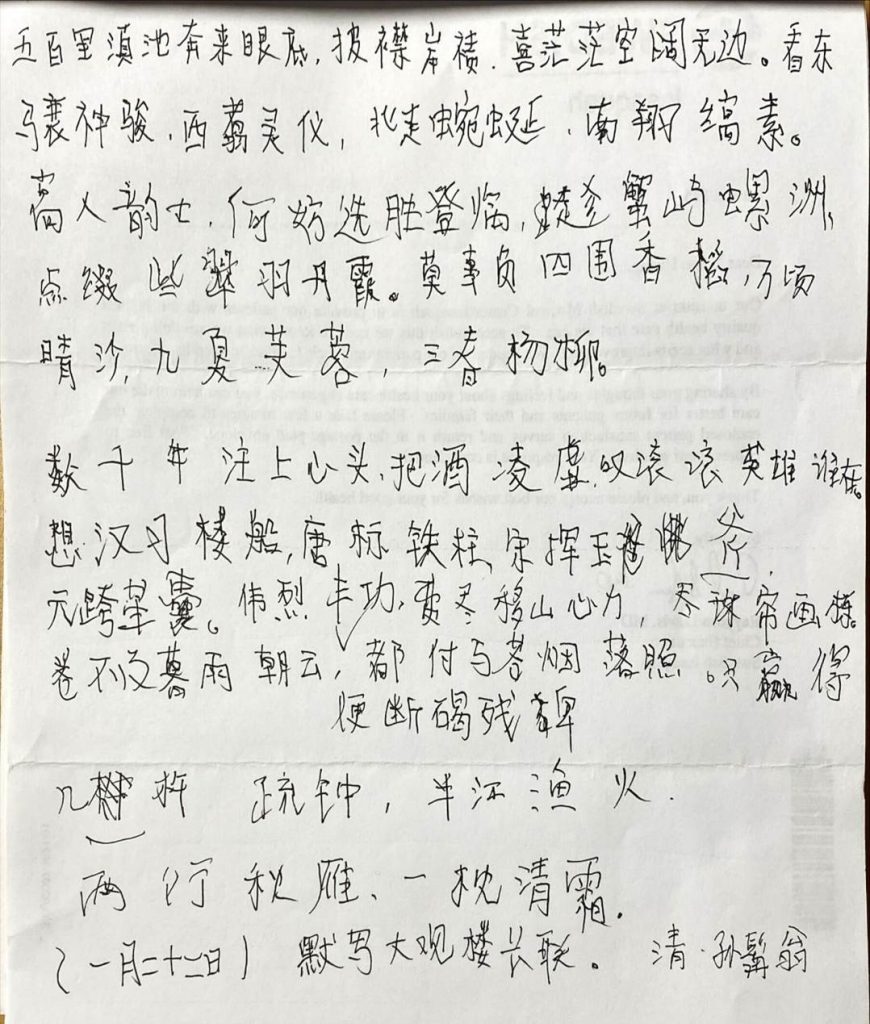
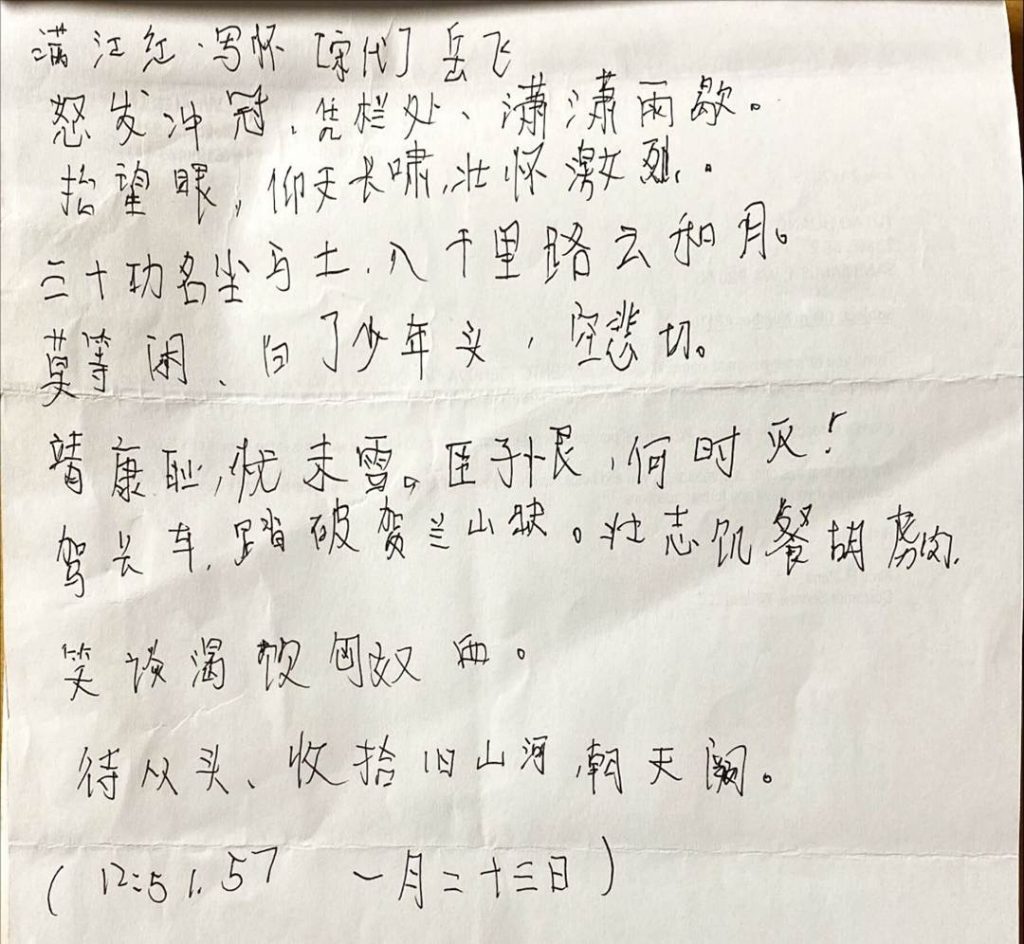

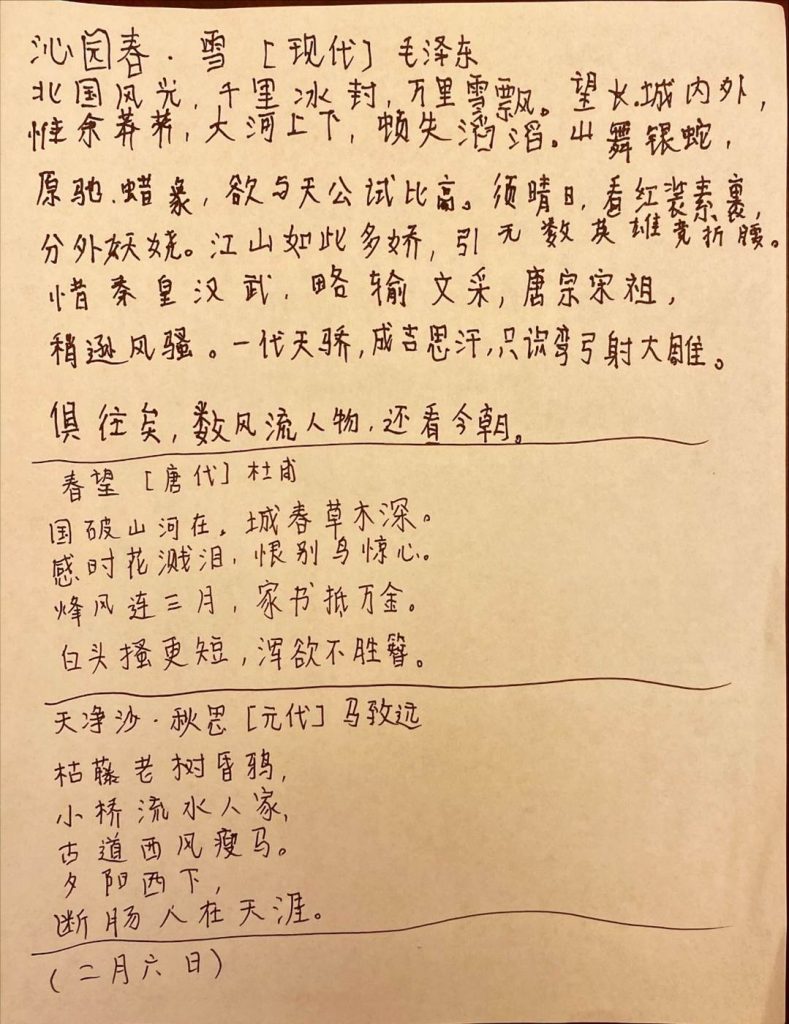

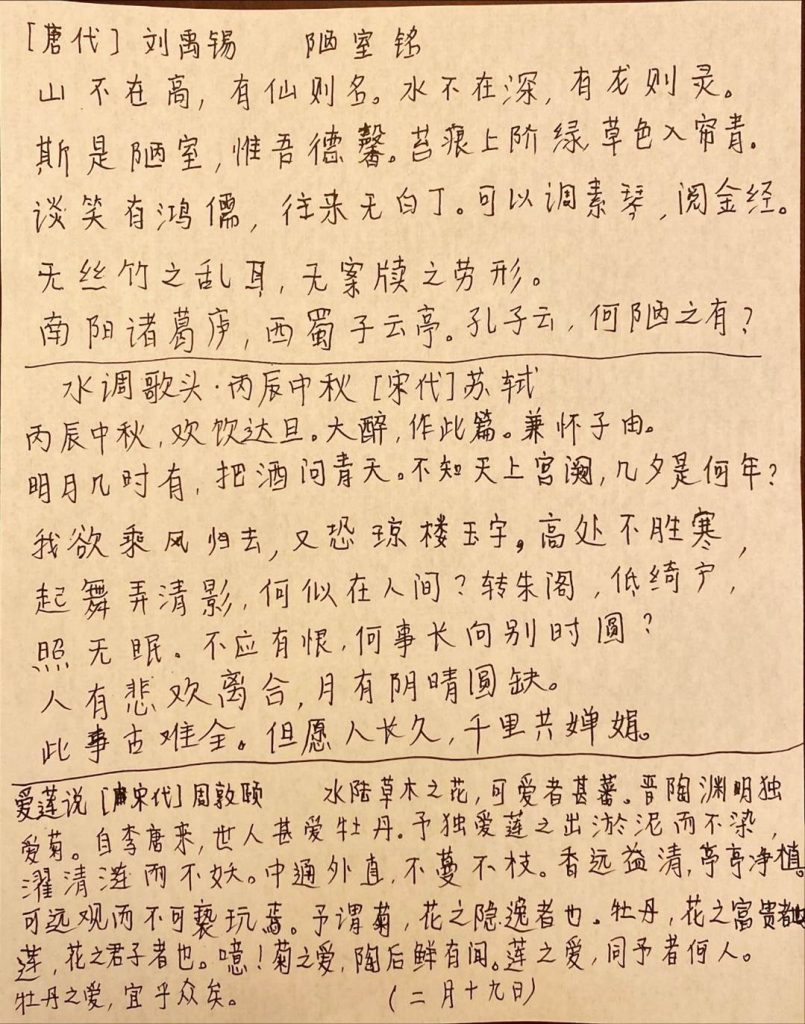

Although I still far from regaining the effortless control over pen and paper I once had, my handwriting is already much improved compared to the wild, illegible strokes right after my stroke.
I praise the magical power of the human brain. As long as you keep using it, it can learn to rewire the missing links!
Here are a few observations and thoughts I have summed up from all those days of practice.
Carbon-ink pens are easier to control than fountain pens. Maybe it’s because the ink inside the fountain pen cartridge flows too freely, causing the center of gravity to shift and making the pen harder to hold steady? Or perhaps the fountain pen dispenses ink too quickly, making it difficult to manage? I honestly can’t fully understand the reason.
Resting the elbow on the desk is better than keeping it in the air. The reason for this seems fairly easy to understand: when my elbow is in the air, I need to coordinate the muscles of my shoulder, upper arm, forearm, and wrist. As a stroke survivor, these muscles aren’t fully under control, so there are many unstable factors to manage. On the contrary, when my elbow rests on the desk, the strength from my shoulder and upper arm is separated from that of my forearm and wrist. At this point, I only need to focus on controlling the muscles in my forearm and wrist. I remember complaining to my occupational therapist that even a simple movement with my right hand seemed to require my whole body’s effort. The therapist placed a towel on the table and had me rest my right elbow on it, isolating the hand muscles and allowing me to concentrate on its strength. That seemed to work similarly.
Writing Chinese is easier than writing English. This may sound a bit counterintuitive. Chinese characters have so many strokes. How could they be easier to write? In fact, although Chinese characters have many strokes, most of them are straight lines. English letters have fewer strokes, but there are many curves, and controlling those curves is one of the biggest challenges for me. At first, I planned to practice the cursive script that I started learning in middle school. However, I found that the curvy strokes were too difficult to control. So, I decided to switch back to the simplest printed script. They looked a bit childish, but at least they were relatively neater and more recognizable.
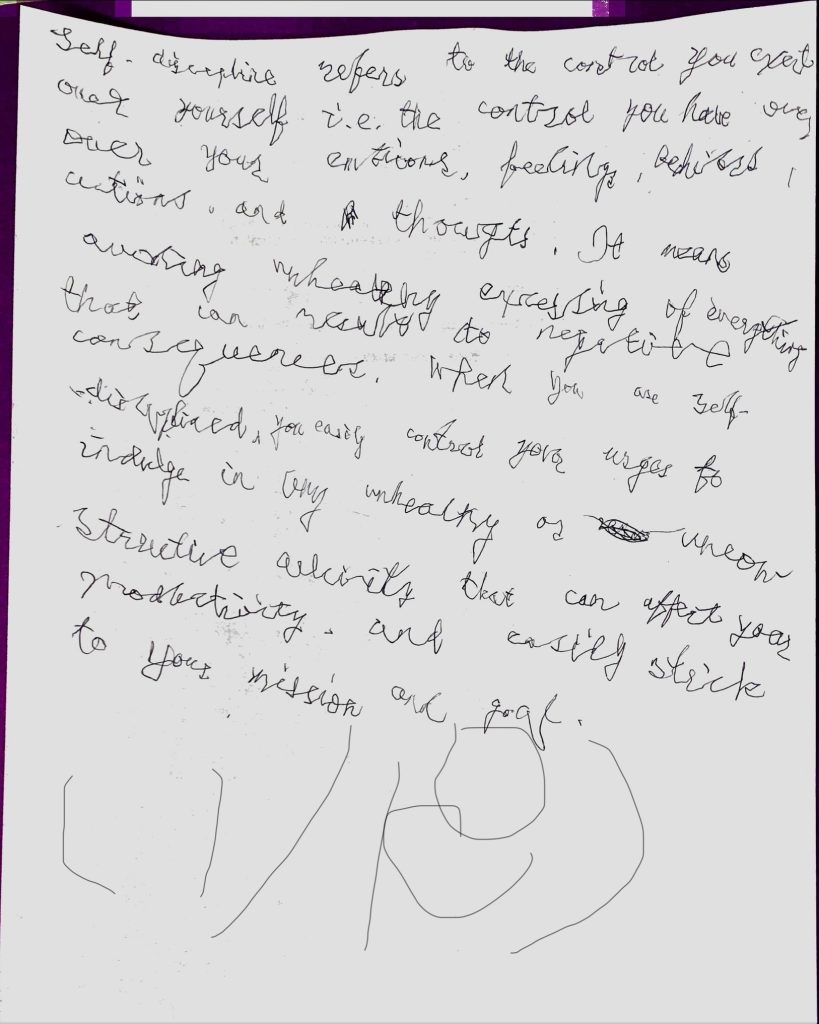
A calm mind yields better results. When I am restless, I tend to write more distorted strokes. When I am calm and composed, I can often write relatively neat characters. Sometimes, when I am impatient, the whole passage turns messy. If I calm down and rewrite it, the result is completely different.
I probably wouldn’t have noticed all these nuances before my stroke. First, as a heavy computer and phone user, I rarely wrote by hand; second, writing was usually rushed, and I only cared about the content, not the act of writing itself. Now, since writing is hard and slow, I often reflect on the experience of pen and paper as I write.
Sometimes I feel that practicing handwriting is like Zen meditation: emptying my mind of distractions, staying calm and composed, and carefully contemplating how to start each stroke, how to move the pen, and how to write a neat and orderly passage.
During this period of recovery, I’ve had many opportunities for quiet reflection, allowing me to examine my words and actions. In the fast-paced modern life, isn’t this a rare form of meditation?
PS. Here is a collage of some of my practices in the first few months:
